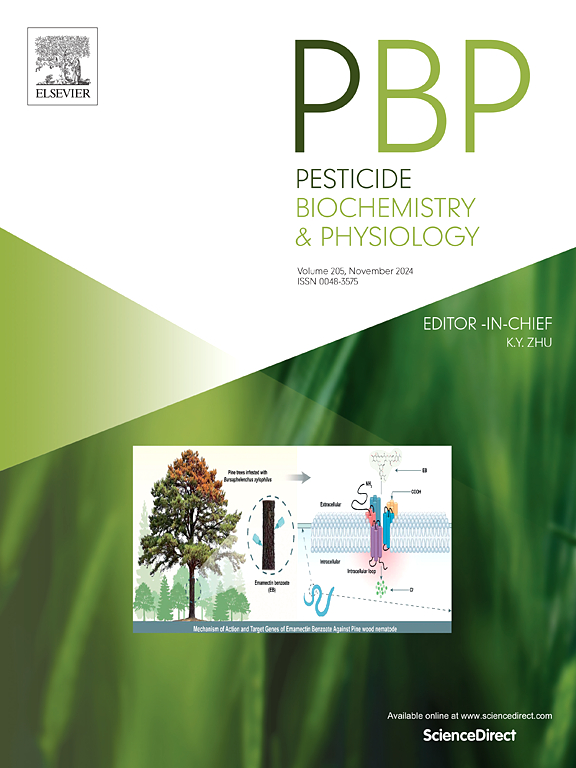Effects of the insecticide thiodicarb on non-target organs and behavior of the stingless bee Partamona helleri (Hymenoptera: Meliponini)
IF 4.2
1区 农林科学
Q2 BIOCHEMISTRY & MOLECULAR BIOLOGY
引用次数: 0
Abstract
Stingless bees are vital pollinators in the Neotropics and can be exposed to pesticides used in agriculture during their foraging activities. Among these pesticides, the insecticide thiodicarb is commonly applied to bean and sunflower crops, posing a potential risk to the stingless bee Partamona helleri, which pollinates these plants. This study aimed to investigate the effects of thiodicarb on mortality, morphology, programmed cell death signaling pathways in the midgut and Malpighian tubules, and the locomotion behavior of P. helleri workers. The estimated lethal concentration (LC50) of thiodicarb for P. helleri was 87 μg a.i. mL−1. Bees fed this concentration exhibited morphological damage to the midgut epithelium and Malpighian tubules, including brush border degeneration, increased cytoplasm vacuolation, and the release of cell fragments into the intestinal lumen. In the midgut, regenerative cells showed cytoplasm disorganization and nuclear pyknosis. Immunofluorescence analysis revealed an increase in cell death via autophagy and apoptosis in the epithelial cells of the affected organs. Ingestion of thiodicarb also altered the bees' locomotion, resulting in increased meandering and decreased walking speed and total distance traveled. These findings demonstrate that the LC50 of thiodicarb causes damage to non-target organs as the midgut and Malpighian tubules, and impairs behavior, which may ultimately affect the pollination services provided by P. helleri. These results enhance our understanding of the vulnerability of stingless bees to insecticides and underscore the importance of strategies aimed at protecting these pollinators.

求助全文
约1分钟内获得全文
求助全文
来源期刊
CiteScore
7.00
自引率
8.50%
发文量
238
审稿时长
4.2 months
期刊介绍:
Pesticide Biochemistry and Physiology publishes original scientific articles pertaining to the mode of action of plant protection agents such as insecticides, fungicides, herbicides, and similar compounds, including nonlethal pest control agents, biosynthesis of pheromones, hormones, and plant resistance agents. Manuscripts may include a biochemical, physiological, or molecular study for an understanding of comparative toxicology or selective toxicity of both target and nontarget organisms. Particular interest will be given to studies on the molecular biology of pest control, toxicology, and pesticide resistance.
Research Areas Emphasized Include the Biochemistry and Physiology of:
• Comparative toxicity
• Mode of action
• Pathophysiology
• Plant growth regulators
• Resistance
• Other effects of pesticides on both parasites and hosts.

 求助内容:
求助内容: 应助结果提醒方式:
应助结果提醒方式:


